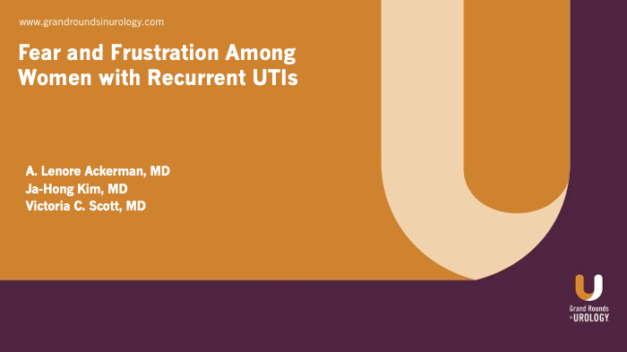Fear and Frustration Among Women with Recurrent UTIs
In conversation with A. Lenore Ackerman, MD, PhD, Assistant Professor of Urology and Director of Research in the Division of Female Pelvic Medicine and Reconstructive Surgery at the University of California, Los Angeles, Ja-Hong H. Kim, MD, Associate Professor in the Division of Pelvic Medicine and Reconstructive Surgery at the University of California, Los Angeles, and Victoria C. Scott, MD, Associate Program Director of the FPMRS Fellowship at Cedars-Sinai Medical Center, discuss a recent study of the experience of women with recurrent urinary tract infections (rUTIs). Dr. Scott explains that 29 women were recruited to participate in 1 of 6 focus group discussions to investigate the perspective of women suffering from rUTIs. She then lists some preliminary themes from the discussions with the women, including fear of development of antibiotic resistance, widespread knowledge of the collateral damage from antibiotics, concern about taking unnecessary antibiotics, anger at physicians for “throwing” antibiotics at them, a feeling that the medical profession underestimates the impact of rUTIs, a need for research on nonantibiotic options for prevention and treatment, and resentment towards the medical system for not dedicating more research efforts to providing more timely diagnosis. Dr. Scott synthesizes these themes into two emergent concepts: fear about the overuse of antibiotics and frustration at the medical system for not providing alternative treatments or taking rUTI symptoms seriously. Dr. Kim then notes that this initial study has produced two additional studies on the current management of rUTIs that take expert and personal care provider experiences into account. Dr. Ackerman highlights the importance of data capturing that patients are not seeking antibiotics necessarily in the way doctors assume they are, though Dr. Kim does add the caveat that the women in the study were a relatively homogeneous group of college-educated white women. Dr. Ackerman also muses that the attitudes expressed in this study suggest that this population may be interested in a vaccine for rUTIs. Drs. Ackerman, Scott, and Kim conclude by noting that the study made evident the importance to patients with rUTIs of focusing on their experience rather than merely the clearance of bacteria.
Read More

